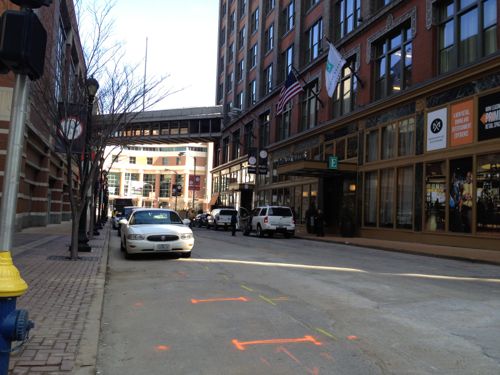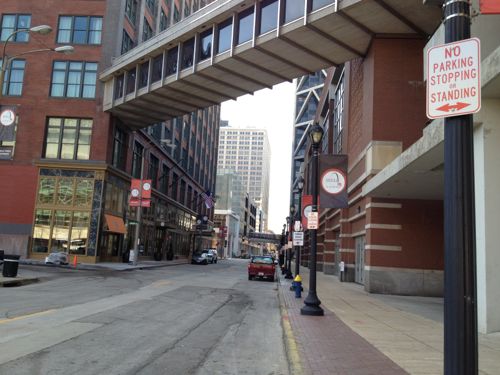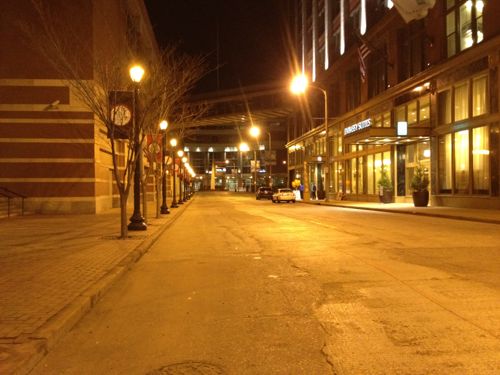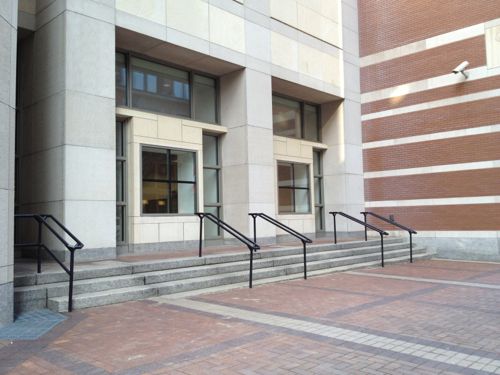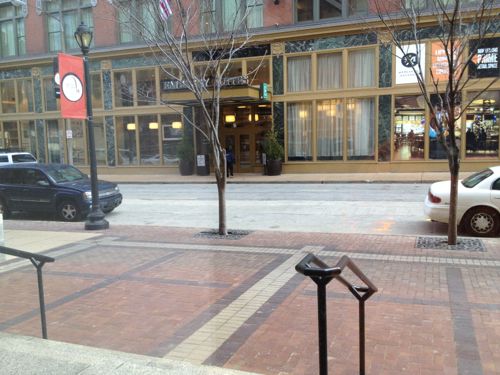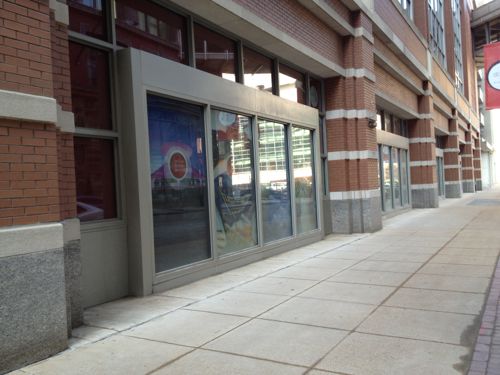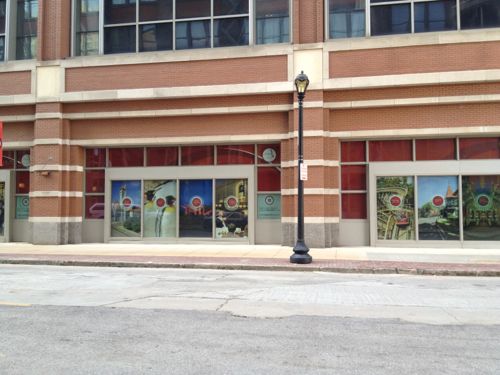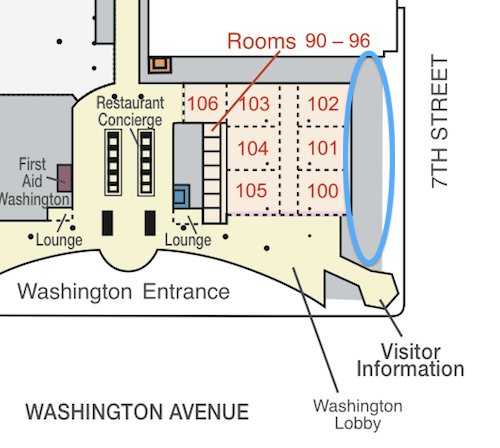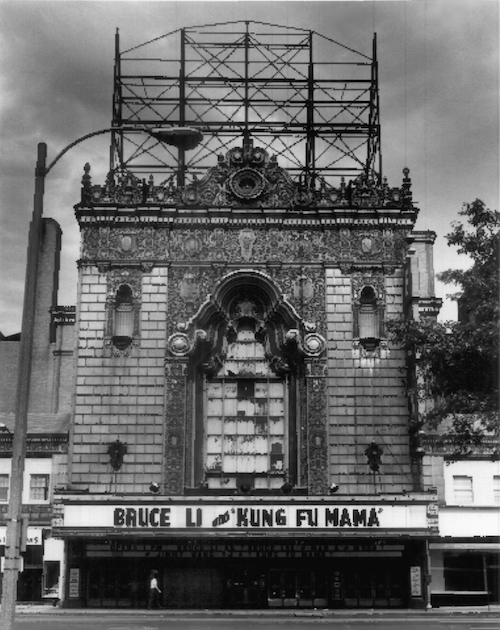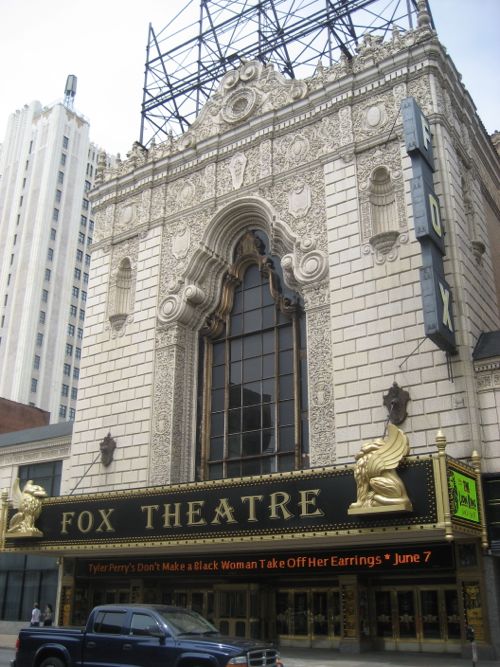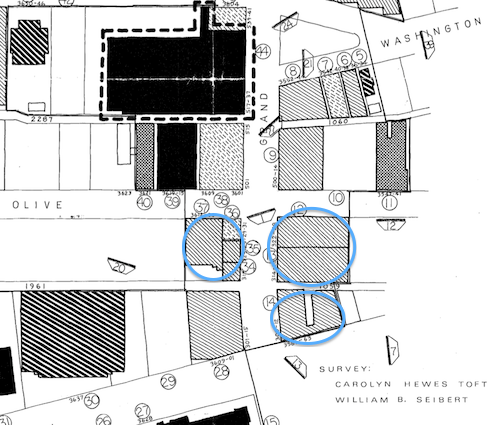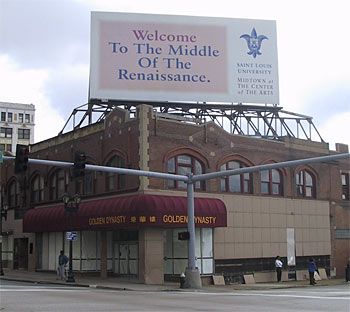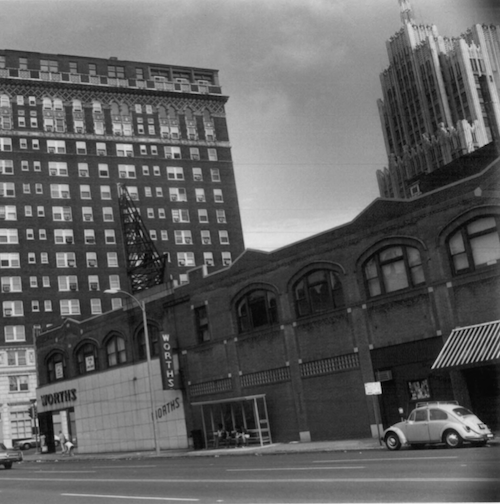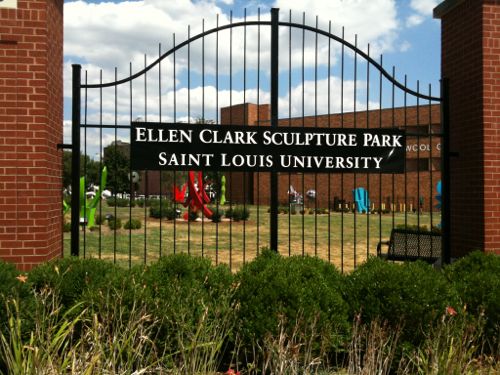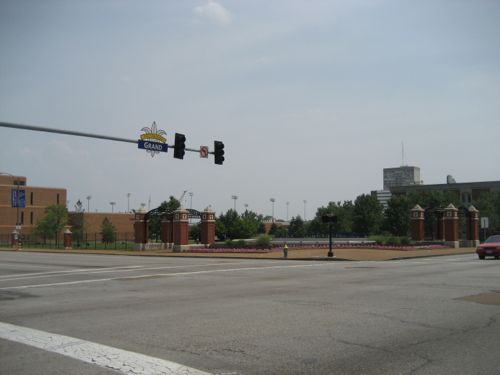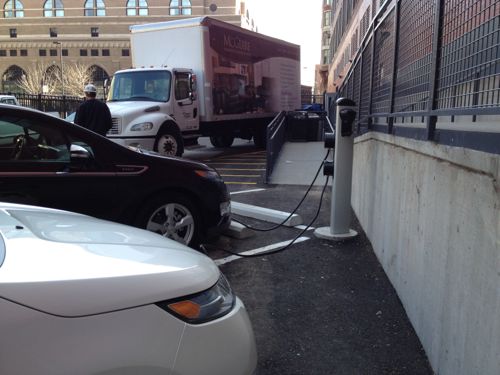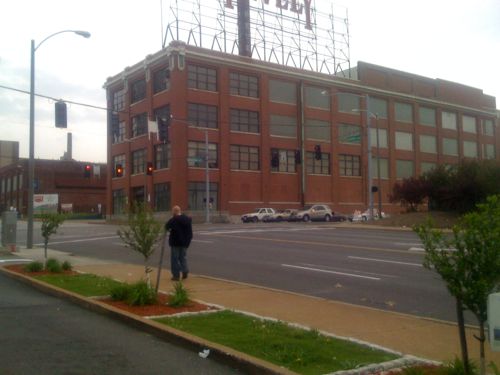 Mark your calendars for March 8th — seven local teams will present their response to the challenge they were assigned. Â Facebook users can RSVP here, everyone else show up — nobody will be turned away. The event is free.
Mark your calendars for March 8th — seven local teams will present their response to the challenge they were assigned. Â Facebook users can RSVP here, everyone else show up — nobody will be turned away. The event is free.
From the announcement:
For our second event of 2012, GOOD Ideas for Cities is headed to St. Louis.
GOOD Ideas for Cities taps creative problem-solvers to tackle real urban challenges and present their solutions at live events across the country. Thanks to our partnership with CEOs for Cities and a generous grant from ArtPlace, we’re taking the program to five mid-sized cities in 2012. If you’re in St. Louis, here’s how you can be a part of it:
Last year, we issued a call for creatives in St. Louis, and chose seven teams to represent the city. Each team was issued a challenge proposed by local urban leaders. At the event, the creative teams will present their solutions to their assigned challenge, and the urban leaders will join them onstage for a brief Q&A. Afterwards, join us for drinks and more conversation as we discuss how to make these ideas a reality for St. Louis.
Thursday, March 8
Doors at 6:00 p.m.
Program begins at 7:00 p.m.
Contemporary Art Museum of St. Louis
3750 Washington Blvd.
St. Louis, MO 63108
The event is free;Â RSVP via Facebook
Cash bar; Pi Truck selling pizzas outside
Hosted by HOK and Contemporary Art Museum of St. Louis
Supported by ArtPlace
Special thanks to our partners: AIGA St. Louis, ALIVE Magazine, Amber Murphy, nextSTL, Nine Network, St. Louis Regional Arts Commission,UrbanReviewSTL
The ChallengesÂ
1)
We have a world-class light rail system in St. Louis. However, we have not seen a major effort to leverage the system as a catalyst for building more livable communities in the St. Louis region How might we increase ridership on St. Louis’ light rail to help demonstrate to the city the important opportunities around transit?
Kim Cella, Citizens for Modern Transit and Rhonda K. Hamm-Niebruegge, Lambert-St. Louis International Airport
STL Alley Lovers: Christopher Galli, Andy Heaslet, Derek Hoeferlin, Monika Jankowiak, Jenny Murphy, Jonathan Stitelman
2)
Historically, St. Louis neighborhoods have been racially and economically segregated. The effects of these historic policies, and some current policies, allow the City of St. Louis to remain segregated in these ways: Throughout the city there are streets and public spaces that serve as dividing lines. How can we design the borders between our communities to act as bridges between our neighborhoods?
Vince Schoemehl, Grand Center and Jennifer Allen, Trailnet
Arch City Revival: Katy Mike Smaistrla, Emily Hemeyer, Joyce Gorrell, Amy Lampe, Sarah Paulsen, David Burnett
3)
Have an animated conversation with a young transplant or multi-generational loyalist and you will understand the passion people here have for St. Louis. But, too often, the message falls back on empty boosterism. Whatever the cause, we must understand it, admit it and fix it. How do we deepen the pool of diverse people who love St. Louis and are personally invested in its progress?
Jeff Rainford, Office of the Mayor Francis Slay and Hank Webber,Washington University
Brain Drain: Matt Strom, Tara Pham, Logan Alexander, Noah MacMillan, Zoë Scharf, Amanda Yates, Andrew Warshauer, Kuan Butts, Danielle Wallis, Christine Stavridis, Bennett Gale
4)
Located in the heartland, St. Louis has unique resources that could allow it to become a leader in urban agriculture. Yet most of the food consumed in the region is produced hundreds or thousands of miles away, and many urban areas of St. Louis have limited access to fresh food. How can St. Louis use our resources and stakeholders to increase accessibility of healthy, locally grown food?
Craig Heller, Food Works; Frank Finnegan, St. Louis Area Foodbank; Mike Sorth, Gateway Greening; Eric Schneider, RCGA
STL Provocateur: Rhonda Smythe, Jeanette Reynolds, Stephanie Co, Will Fischer, Anne McCullough
5)
One of the most critical challenges facing St. Louis is the low graduation rate for St. Louis City schools. Currently, only 20 to 30% of St. Louis City students graduate from high school. We know that low graduation rates cost taxpayers more, and as a result there is a rise in crime, homelessness, and substance abuse rates in the city. How do we motivate and empower more local high school students to graduate?
Rachelle Morgan, Shearwater; Jay Swoboda, The Homeless Empowerment Project; Sarah McCabe, The Point
ACTivate the City:Â Stan Chisholm, Dayna Kriz, Gina Martinez, Kevin McCoy, Mallory Nezam, Carlie Trosclair, Daniel Waxler
6)
Government fragmentation, or the lack of regionalism, is a hindrance to building a prosperous St. Louis region. The lack of regional cooperation impedes progress of both public services and social services. How do we break down the real and perceived barriers that continually inhibit regional institutions, local governments and both states in the metropolitan St. Louis region from working together?
Maggie Hales, East-West Gateway Council of Governments and Tom Etling, St. Patrick Center
Live the Lou:Â Stacey Whe, Juard van Dijkhorst, Amanda Clark, Court Sloger, Mike Glodek, Laura Schmaltz, Nate Paul
7)
St. Louis is a region with a deep heritage in great community parks. Yet since the economic crisis, funding is scarce and the capacity of the park departments has been greatly reduced, meaning our regional, state and national parks are in serious decline. How can we ensure that the city is able to protect, preserve and maintain our prized parks for generations to come?
Susan Trautman, Great Rivers Greenway and Kevin Hales,Partnership for Downtown St. Louis
HOK FIT: Chip Crawford, Mary Ostafi, Sarah Weissman, Charlie Lutz, Valerie Greer, Tyler Meyer, Michael Browning, Leesa Coller, Jonathan Murphy, Jason Pierce, Dhaval Barbhaya
Stay tuned for details about future GOOD Ideas for Cities events. If you’d like to talk about bringing the program to your city or school, email alissa[at]goodinc[dot]com or follow us at @IdeasforCities
